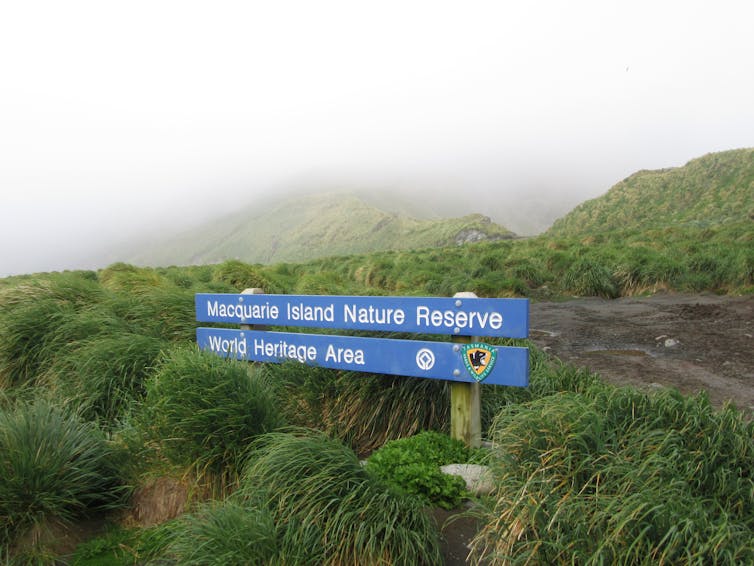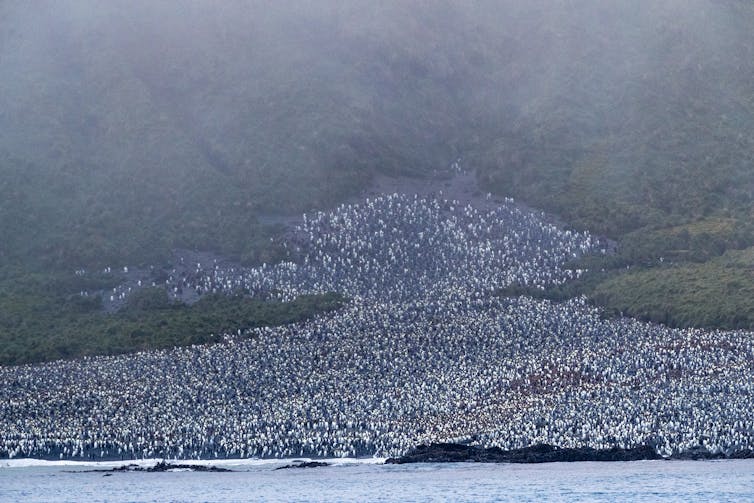MACQUARIE ISLAND
1.Background
Macquarie Island, around 1,500km southeast of Tasmania, is more than just a remote rocky outcrop. In fact, it’s the only piece of land on the planet formed completely from ocean floor, which rises above the waves to form peaks that teem with penguins and other bird species, some of them found nowhere else on Earth
These are just some of the reasons this unique island and the seas surrounding it have globally significant conservation values.

2.Protecting the Island
- Macquarie Island and its surrounding seas (to a distance of 5.5km) are already protected as a Tasmanian reserve and the area (this time including seas to a distance of 22km) is also a World Heritage Area
- A Commonwealth marine park also covers most of the southeast quadrant of the island’s “economic exclusion zone”, including a sanctuary zone and two seafloor management zones
- The federal government’s proposed expansion of the marine park would cover the island’s entire economic exclusion zone, increasing the area of Australia’s marine sanctuaries by more than 388,000 square kilometres, an increase larger than the area of Germany

3. Uniqueness of Macquarie Island
- Macquarie Island is the exposed crest of the 1,600km-long undersea Macquarie Ridge, which makes Macquarie Island the only piece of land in the world formed entirely of oceanic crust
- Macquarie Ridge is one of only three such ridges that impede the eastward flow of a current called the Antarctic Circumpolar Circulation, resulting in distinct differences between the west and east sides of the ridge, which are used in different ways by different species
- The oceanography is further divided north to south by two major ocean fronts, the Sub-Antarctic Front and the Polar Front, creating three distinct bodies of water

- They are closer here than anywhere else in the Southern Ocean and as they interact with the Macquarie Ridge create at least six different large-scale oceanographic habitats
- This creates an outstanding spectacle of wild, natural beauty and a diverse set of habitats supporting vast congregations of wildlife, including penguins and seals
- Fifty-seven seabird species, including four species of penguins and four species of albatross, have been recorded on Macquarie Island and 25 of these species have been observed breeding there. The royal penguin and the Macquarie Island imperial shag live nowhere else on Earth
- The ridge includes a series of undersea mountains that act as “stepping stones” linking subantarctic and polar animals on the sea floor, such as brittlestars
- Direct human impacts in the area are predominantly due to fishing and marine debris, although climate change is an ever-present threat too
- The fishery targets the deepwater Patagonian toothfish using bottom longlines, mostly in the central zone of the Macquarie Ridge
- This fishery is generally well regarded for its best-practice fishing methods and commitment to positive environmental outcomes and this fishing activity would continue under the new plans
- But if new fisheries were allowed to develop targeting midwater species, or new industries such as seabed mining were permitted, these could directly impact the seabirds, marine mammals and other species that live in these areas
- Restrictions on potential future fisheries would be determined by the distribution of “sanctuary zones” precluding fishing and “habitat/species zones”, which could accommodate sustainable fishing. Mining would be precluded under either category of protection
4.Way forward
The government’s proposal signals a clear priority for protection over development in this area. A period of public consultation on the proposal will commence in March
Any future development of the marine park would need to be orderly and careful, including prior consideration of environmental impacts
Any changes to the current fishery management arrangements should ensure that the changes maintain or enhance conditions for a long-term sustainable fishery
Source:DownToEarth




